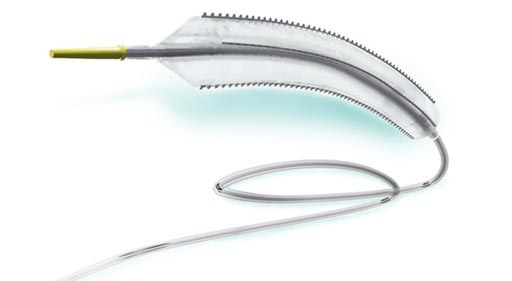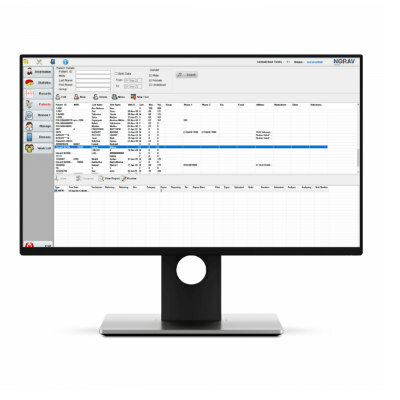Vessel Dilation Device Advances Peripheral Artery Interventions
By HospiMedica International staff writers
Posted on 17 Mar 2017
A novel dilation balloon creates multiple longitudinal micro-serrations in order to help the expansion of blood vessels in peripheral artery disease (PAD).Posted on 17 Mar 2017
The Cagent Vascular Serranator Alto combines mechanical percutaneous transluminal angioplasty (PTA) balloon dilatation and multiple serrated scoring elements in order to create linear, interrupted scoring along the endoluminal surface of peripheral arteries. The teeth-like ridges are located on four sides of the dilation balloon; as it is pumped with saline to expand a constricted vessel, the ridges create tiny serrations lines help guide the expansion of the arteries.

Image: The Serranator Alto percutaneous transluminal angioplasty balloon (Photo courtesy of Cagent Vascular).
The Serranator Alto is intended for dilatation of PAD lesions in the iliac, femoral, iliofemoral, and popliteal arteries, as well as for the treatment of obstructive lesions of native or synthetic arteriovenous (AV) dialysis fistulae. The need for the device, according to the company, arises from an increasingly aging population, increased incidence of obesity, type-2 diabetes, smoking, and hypercholesterolemia, all of which contribute to an increased lesion complexity in PDA.
“A new approach to vessel dilatation is long overdue for treatment of diseased peripheral arteries; today we are treating more complex lesions that require better tools,” said vascular surgeon Peter Schneider, MD, co-founder and chief medical officer of Cagent Vascular. “We believe serration technology will prove to be effective in more complex lesions and will evolve into the new standard of care for vessel dilatation. In the future we hope to show clinical benefit as a vessel preparation tool with new technologies, such as drug coated balloons.”
“We have also begun the development of the Serranator Bass for treatment of the below-the-knee or infrapopliteal arteries, where new technologies are desperately needed for the treatment of critical limb ischemia,” said Carol Burns, CEO of Cagent Vascular. “Future applications of interest include serration technology for vessel preparation prior to the use of bioresorbable scaffolds in coronary arteries.”
PAD results when the peripheral arteries become too narrow or obstructed due to plaque, limiting blood flow to the legs. If left untreated, it can cause pain or aching in the legs, difficulty with walking, resting pain in the foot at night while lying down, and non-healing sores or infections in the toes or feet; PAD can ultimately lead to limb loss in its most severe form. In addition, it can be associated with other serious arterial conditions that can lead to heart attacks and stroke.











.jpg)

.jpg)